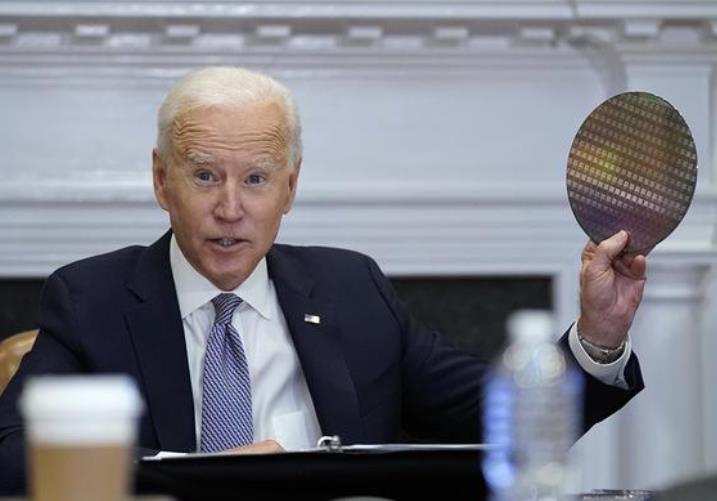Tariff Policy on China's Semiconductor Industry by the U.S. and Impact
Recently, the United States has imposed a tariff policy of up to 50% on China's semiconductor industry, aiming to protect its domestic wafer fabs from the impact of low-cost chips from China. A report released by the Semiconductor Industry Association (SIA) in the United States pointed out that despite the significant subsidies provided by the U.S. government to attract chip manufacturing companies to return, the U.S. has performed unsatisfactorily in terms of capacity growth in DRAM, NAND, and chips with processes above 10nm. It is estimated that by 2032, the U.S. chip production capacity will only rank fifth globally, with a market share of approximately 14%, significantly lower than China's Mainland's 21%. This data indicates that the U.S. relies heavily on China in the mature chip manufacturing sector, especially for chip manufacturing with processes above 28nm, where China's Mainland accounts for 37% of the global share.

United States Tariff Policy
Faced with China's Mainland's leading position in global semiconductor production capacity, the U.S. has imposed increased tariffs on specific Chinese products, attempting to limit the entry of Chinese semiconductor products into the U.S. market through economic means. Specifically, the U.S. has significantly increased tariffs on products such as electric vehicles and semiconductors. The tariff on electric vehicles has increased from 25% to 100%, while the tariff on semiconductor products has also increased from 25% to 50%.
Policy Objective
The primary purpose of the U.S. increasing tariffs is to protect its domestic semiconductor industry, especially wafer fabs, from being impacted by China's low-cost chips. The U.S. believes that China's wafer costs are significantly lower than those in the U.S., thanks to China's mature industrial chain, lower labor costs, and efficient production speed. By increasing tariffs, the U.S. aims to weaken China's cost advantage in chips, thus protecting its domestic industry.

Possible Impacts
Despite its protective intentions, the U.S. tariff policy may pose challenges to international trade and domestic chip design companies. Firstly, such protectionist practices may be perceived as closed-door policies, which are not conducive to international trade and global economic development. Secondly, U.S. chip design companies will face significant pressure. If these companies choose to produce in the U.S., they will face high costs; if they choose to produce in China and then ship back to the U.S., they will need to bear tariff pressure. This may affect these companies' profitability and market competitiveness.
Conclusion
The U.S. tariff policy reflects its complex considerations in protecting its domestic industry in the context of globalization. The long-term effects of this policy and its impact on the global economy remain to be observed. At the same time, it also reminds us that in today's global economic integration, unilateral protectionist measures may have a chain reaction, and countries need to jointly seek a more cooperative and balanced development path.
Daily Recommended Models
● OPA320AIDBVR is a precision low-voltage CMOS operational amplifier from Texas Instruments, featuring extremely low noise and high bandwidth with a low quiescent current of only 1.45mA. It operates from a single supply voltage ranging from 1.8V to 5.5V and has a linear input stage with zero crossover distortion, providing an excellent common-mode rejection ratio (CMRR) of typically 114 dB over the full input range. The input common-mode range extends 100 mV beyond the negative and positive supply rails. It is suitable for low-power, single-supply applications and driving sampling analog-to-digital converters (ADCs). Other applications include signal conditioning and sensor amplification.
● MP1530DM-LF-Z is a converter from MPS that combines a three-output boost converter with a linear regulator, providing a complete DC/DC solution. It integrates a 1.4MHz fixed-frequency boost converter and a forward and reverse linear regulator. The switching node of the boost converter drives two charge pumps, which then supply power to their respective linear regulators. It is primarily used to power 3.3V or 5V TFT liquid crystal displays and is also suitable for devices such as portable DVD players, tablets, and car navigation displays.
● XTR111AIDGQR is a precision voltage-to-current converter/transmitter manufactured by Texas Instruments (TI). The XTR111AIDGQR is specifically designed for standard 0mA-20mA or 4mA-20mA analog signals, with a maximum signal source capability of 36mA. The ratio between the input voltage and output current can be set through a single resistor, RSET. Furthermore, the circuitry can also be modified for voltage output. It finds extensive applications in industrial automation, measurement, and control systems, particularly in scenarios requiring precise current or voltage output.









